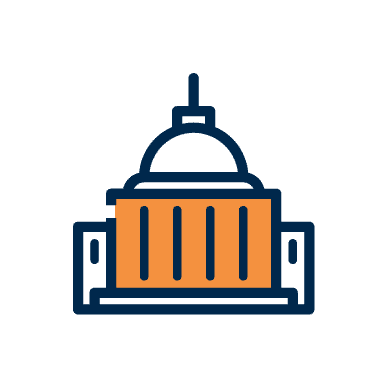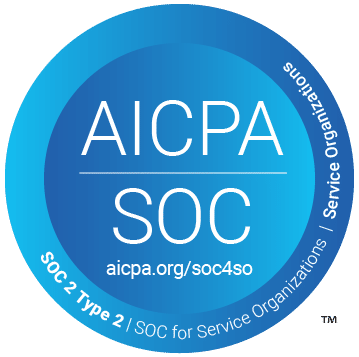
OIG compliance procedures through regular LEIE checks can verify if you are employing individuals or contracting with entities who are listed on the OIG sanction list. The Office of the Inspector General (OIG) maintains a List of Excluded Individuals and Entities (LEIE). It contains a sanction list with names of individuals and entities who may not participate in federal healthcare programs. Your healthcare business is at risk for Civil Monetary Penalties (CMP) if it employs such individuals or entities.
Want to know how to avoid being in violation of OIG compliance requirements? Understanding how to complement LEIE checks with other exclusion screening procedures can help your business remain compliant.
What do Exclusions mean?
You may be wondering, “What are exclusions?” It is helpful to first have a general understanding of this concept. This will allow you to know what it is you should be screening for.
Exclusions are defined in Sections 1127 and 1156 of the Social Security Act (SSA). Essentially, it is divided into two types: mandatory and permissive. The former carries with it a penalty of five years and deals with those convicted of:
- Program related crimes
- Patient abuse
- Healthcare fraud
- Felony relating to a controlled substance
On the other hand, the latter is a result of other types of fraud, misdemeanors, licensure issues and failure to perform one’s duties. The degree of liability under permissive exclusions is subject to the discretion of the OIG. Both types result in being placed on the LEIE or OIG sanction list. Those excluded may not participate in federal healthcare programs such as Medicare and Medicaid. This however also includes exclusion from State healthcare programs as defined in Section 1128(h) of the SSA.
LEIE healthcare professionals or providers may not seek any reimbursement for services rendered or items given while under exclusion. Neither may businesses employing or contracting with such excluded individuals or entities seek payment in connection with federal healthcare programs. Those businesses that do can potentially be liable for CMPs, easily reaching thousands of dollars in fines.
The importance of consistent LEIE checks
Knowing who are included on the LEIE is a challenging task. Businesses must regularly conduct exclusion screenings for OIG compliance. They should ensure that they are not employing or contracting with parties on the LEIE.
Exclusion screening may be done by performing an online search on the OIG Exclusion Database. Simply input the pertinent names and search for the results. You may also do this by downloading the updated LEIE Database. This is how an OIG exclusion check is performed. Remember to do this routinely on your existing staff and vendors.
The OIG uploads monthly updates to its LEIE databases. It is highly advisable to synchronize your checks as soon as they come out. Performing background exclusion checks is also an indispensable pre-hire or pre-contracting procedure. This should include confirming the validity of a professional’s license through an LEIE debarment check.
There are a variety of ways to land on the OIG’s List of Excluded Individuals & Entities (LEIE). How to remove yourself from the OIG list however, is another matter altogether. To illustrate the importance of exclusion screening, here are a few cases which lead to expensive and potentially avoidable CMPs:
Last February 29, 2019, the Aroostook Mental Health Services, Inc. (AMHS) from Maine agreed to settle its case with the OIG in the amount of $17,750.12. The OIG discovered that an excluded individual employed by AMHS as a counselor, was giving items or rendering services to its clients. MaineCare which is the Medicaid program of Maine, was billed for such items or services received from this excluded individual.
A similar case occurred last January 4, 2019 in Oklahoma. The Baptist Village of Owasso (BVO) had to pay an expensive settlement of $96,020.92. This was based upon an investigation by the OIG that patients of the BVO were receiving items or services from an excluded individual employed by the latter. The excluded employee was as an administration specialist who may not participate in Federal healthcare programs.
Addressing State level Exclusion Lists
Accomplishing an OIG screening however is not enough. Other databases may also contain excluded healthcare practitioners or providers despite the vast amount of names on the OIG list. Among one of many examples are State level exclusion lists.
The names on such lists might not be included on the OIG sanction list. This does not however mean that such parties may participate in federal level healthcare programs. Any excluded party may not render services or distribute items related to the HHS even if appearing only on a State level exclusion list.
You must make sure to screen all databases if you are a healthcare provider that is participating in HHS programs. This includes State level databases and other sanction lists. Granted that this would be difficult, there are however proprietary software available which includes State level databases in its exclusion screening process.
The SAM EPLS
As previously mentioned, there are more databases out there to watch out for aside from the LEIE. Exclusion will not only result in violation of the SSA or State level healthcare programs. A major database to consider is the Systems of Awards Management (SAM) by the General Services Administration (GSA).
Like the LEIE or OIG sanction list, the SAM is also an online database that can be used to perform a search to identify excluded parties. Unlike its HHS-OIG counterpart however, the GSA-OIG guards against fraud in other areas of government aside from the healthcare system. Those found guilty of such acts will result in exclusions and will be placed in the following databases:
- Excluded Parties List System (EPLS)
- Federal Agency Registration (FedReg)
- Central Contractor Registry (CCR)
- Online Representations and Certifications Application (ORCA)
These are all compiled into the SAM database. Those names found under the EPLS pertains to the healthcare system.
Prior to its integration to the SAM, the EPLS itself used to be a separate database. It consists of data on excluded individuals and entities from procurement and non-procurement programs of the federal government. Various federal agencies were responsible for updating its information. You may also perform debarment checks through the SAM to detect individuals who are not eligible to participate in procurement programs by the government.
Check All Databases
Your exclusion search might only appear to be confined to a particular database. After all, each database deals with its specific though somewhat related (fraud) concerns. As previously mentioned however, the names indicated in a State level database might not be contained on the LEIE. It might not even be included on the SAM database. This is why it is important to screen State level lists as well.
Note however that you must not limit your search to a direct exclusion screening on a State level exclusion list alone. This is true even if your concern is specifically limited to such individuals. The names you are searching for might not appear on such State level exclusion list but could very well be in the LEIE or SAM. You could potentially be liable for CMPs even if you already performed a diligent search on a State level exclusion list.
LEIE checks alone are insufficient. All possible databases must be searched. It will rule out any doubt that the person you are about to hire or already employing is an excluded individual.
Run the numbers regularly
Below is a brief breakdown of the various databases where an excluded individual may appear:
- 42 State Medicaid Sanction Lists
- 17 Federal Sanction Lists
- 34 Licensing Lists
- 14 Miscellaneous Sanction Lists
Note that while this collection of databases can already be considered quite comprehensive, there are always new ones being developed. Certain names might not immediately show up on the main OIG sanction list because they have yet to be forwarded to the HHS-OIG. It does not mean however that such names on these different lists are not considered excluded. They also may not participate in federal healthcare programs.
Employing and transacting with such individuals or entities would still merit expensive CMPs. To keep up with these changes, it would be best to subscribe to reliable screening software. This should ideally keep itself abreast with such updates and conveniently check all of these lists in one go.
Summary
Performing regular exclusion screenings on federal and state level databases keeps your business in line with stringent OIG compliance requirements. Do not confine yourself to just the standard LEIE check. It is risky for your organization and simply will not do.
In closing, what do exclusions mean? It means being included in the exclusion list of any federal or State level government database, not just the OIG sanction list.
Do not limit your search to just one exclusion list. Extend it to all possible databases which may potentially hold disqualified individuals or entities from participating in federal healthcare programs.
If you have any questions or need clarification on any of the points presented, feel free to get in touch with us. We are happy to assist and any inquires are free of charge.
Please refer to this resource for more helpful information on EPLS.



































